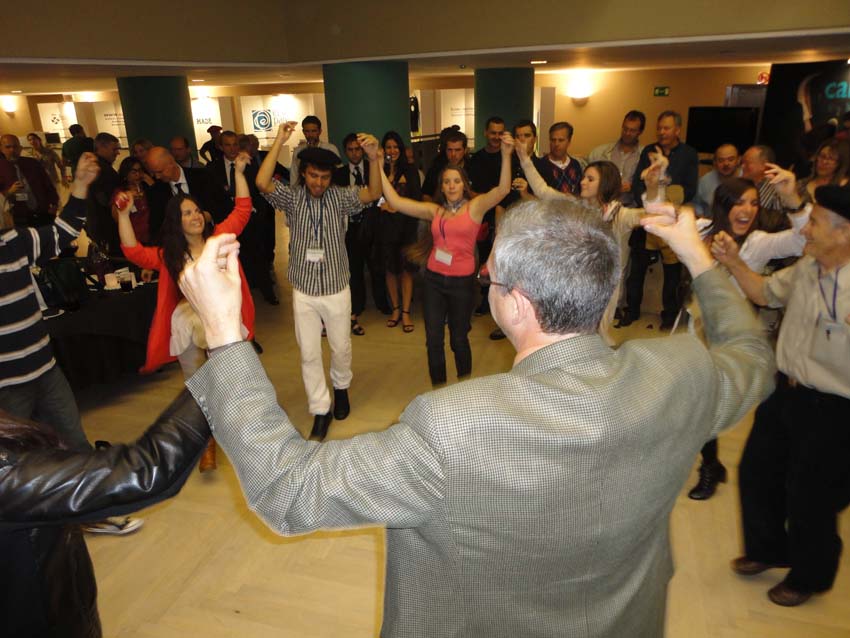Ander Egiluz Beramendi/USA. Amerikanuak, the 1975 seminal book by Jon Bilbao and William Douglass, was the spark needed for Basque Studies programs to blossom in America. It’s been forty years now since the book was launched. And another forty years have gone by since BSU students travelled to Oñati, Basque Country with the Studies Abroad program for the first time. That is why, Ysursa and his colleagues named Joan-Etorri, or Going forth and Going back, the 2015 Jaialdi’s symposium: “To go to America, and to come back to the Basque Country,” in his own words.
-This symposium is organized every five years and you have already started getting submission. Will there be any changes compared to 2010?
-In previous years we have only accepted graduate, master and PhD students’ works but, for next year, we are also accepting undergraduates’ works and, also, what we call popular scholarship: works by people not from the academic world.
-Is this a way to build bridges between Academia and society?
-Yes, indeed. And that was also the underlying idea of the logo: two people holding hands, creating a bridge.
-How many submissions are you expecting to receive? Is there a deadline?
-In 2010, in two days, we hosted 20 conferences and that’s what we expect for next year too. We have already received some papers but there’s not a deadline. Besides this, we will also organize some talks at the Basque Block’s Egyptian Theatre which is called Meet the Basques. The reason for this is that Boise is growing and there are people that don’t know a lot about Basques. These talks will be organized in collaboration with the Idaho Humanities Council.
-It’s been forty years since BSU sent its first students to Oñati. Are you planning to organize anything in this regard?
-No, but there are some people in Boise that went to Oñati on that trip and that organize, every now and then, commemorative events. The last one was five years ago, so they might be organizing something for next year’s Jaialdi too.
-Why was that BSU’s Studies Abroad program important for the Basque community?
-Well, some people even got married! (He laughs). In any learning process the student is always the most important – if one doesn’t want to learn he or she will never do it. And in that process, studying abroad, when possible, is the most beautiful part. When you go abroad you learn a lot about yourself and your country, because there you get a different perspective. You also learn about life. I went thirty years ago to Oñati and, I started learning Basque there. That changed my life.
-Jon Bilbao and William Douglass’ seminal book ‘Amerikanuak’ will also turn forty in 2015.
-With, and thanks, to that book Basque Studies programs started in the States. Even if it’s an academic work, it somehow set an agenda for the future and asked a lot of questions that, of course, have very different responses four decades later. Douglass didn’t see a bright future for the Basque-American communities and, even if it’s true that it is not easy to maintain these kinds of communities, after the book was published, Jaialdi was created, for instance, and it's a social phenomenon that goes beyond the Basque community. NABO was created with just six clubs, and currently there are more than forty member Basque clubs. The Basque Museum of Boise is another example. There is an undeniable crisis because bonds are weakening among Basque-Americans, but at the same time new bonds are being created too.
-You are currently serving as managing editor of the digital journal BOGA.
- I’m happy. Jon Bilbao will be the featured writer for the new issue that will be published in October. We also had a meeting with representatives of the Etxepare Institute, that sponsors us, and we discussed some exciting projects, but I cannot give any details about them yet.
-Aita Antton Egiguren Iraola will be Boise’s new Basque priest and, to get him a Visa, a group of people from Boise have organized a fundraiser. How is it going?
- We already got all the money we needed, from around 25 people. As we like to say, we put the money were it matters (he laughs). Now we can only wait until the Government issues his papers. If everything goes alright he will be here for Christmas.






 Send to a friend
Send to a friend Add comment
Add comment








